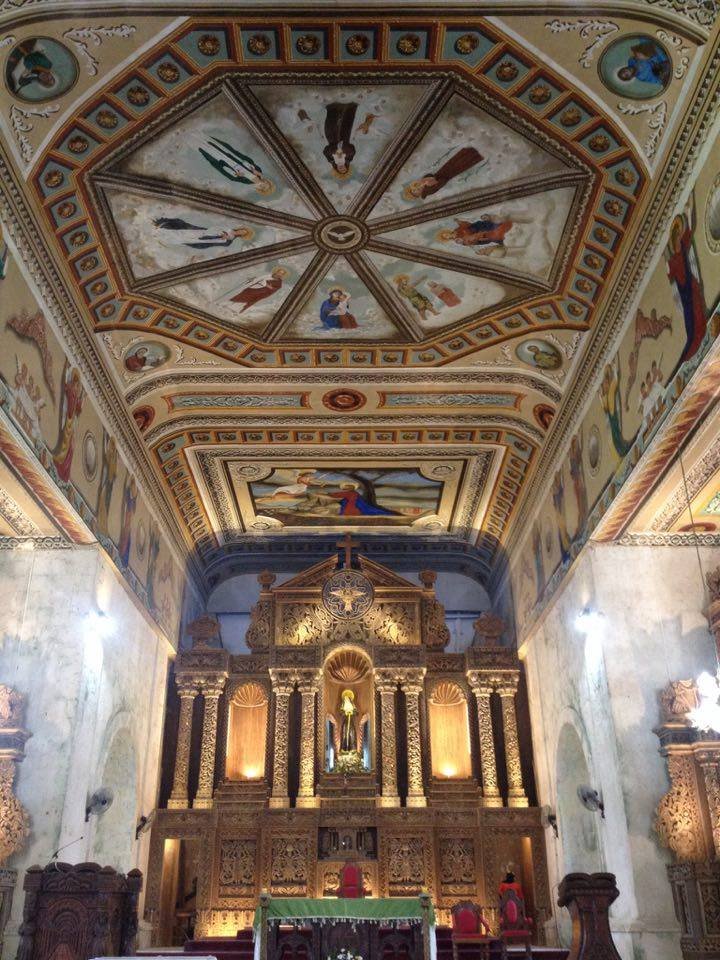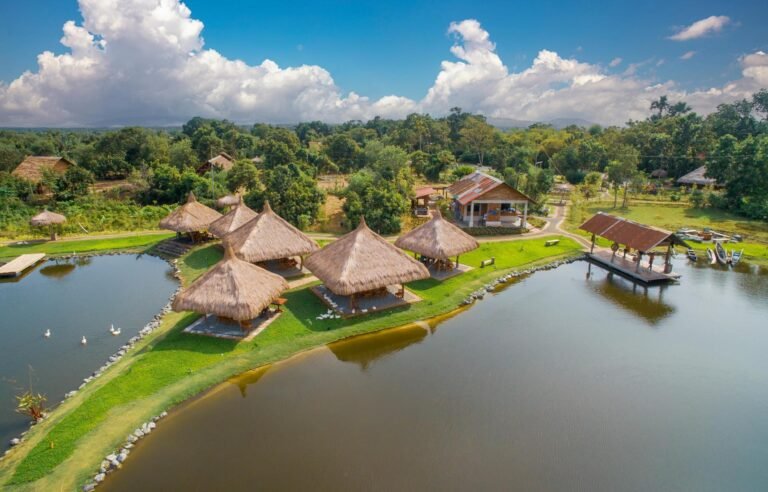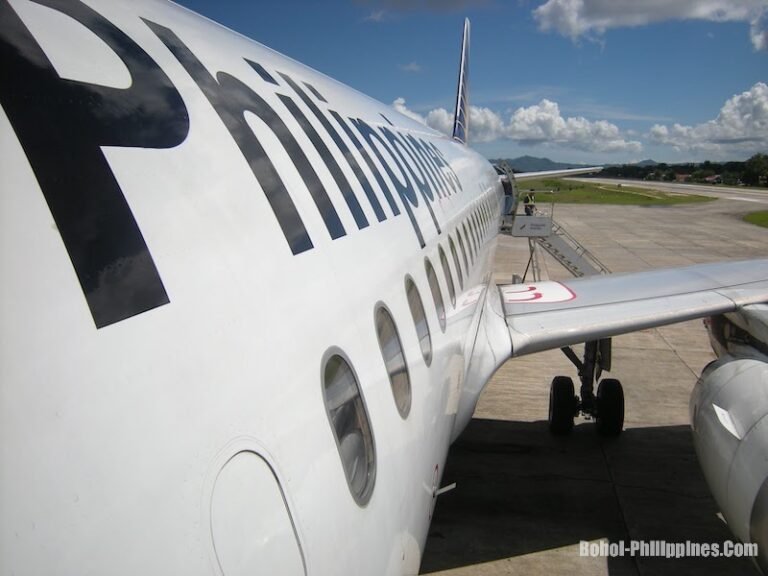Introduction
Nestled in the heart of Baclayon, Bohol, the Church of Our Lady of the Immaculate Conception, commonly known as Baclayon Church, stands as one of the Philippines’ most cherished historical and architectural treasures. Established in the 16th century, it is among the oldest stone churches in the country and a UNESCO World Heritage Site. Despite suffering significant damage in the 2013 Bohol earthquake, the church has undergone extensive renovations, though these efforts have altered some of its original artistic ambiance. This article explores the rich heritage, storied history, architectural splendor, and the impact of the 2013 earthquake and subsequent restoration of Baclayon Church.
Historical Significance
The history of Baclayon Church began in 1596 when Jesuit missionaries, Fr. Juan de Torres and Fr. Gabriel Sanchez, established a visita in Baclayon. A bamboo structure, known as the “Residencia,” initially served as the mission’s center. By 1717, when Baclayon was elevated to parish status, construction of the stone church commenced, utilizing coral stones sourced from the sea, assembled with an adhesive of lime and egg whites by over 200 native laborers. In the 19th century, the Augustinian Recollects added a modern facade, a 21-meter bell tower (completed around 1777), and surrounding stone buildings, enhancing the church’s prominence.
The church served as a rallying point during the Philippine Revolution and withstood challenges like Moro raids and the Tamblot Uprising of 1621, remaining a steadfast center of faith. Fortified walls, remnants of which remain, and rumored dungeons beneath the church reflect its multifaceted role in colonial times. The adjacent convent, now a museum, preserves relics that trace Baclayon’s Jesuit origins and Bohol’s cultural history.
Architectural Marvel
Baclayon Church exemplifies the fusion of Spanish colonial and Filipino architectural styles. Built from coral stone, its facade blends Spanish elements, such as the rose window and belfry, with Filipino motifs, including bamboo and wood accents in the interior. The church follows a Latin cross plan with a nave, two aisles, and a transept, creating a balanced layout. The outer facade, added by the Recollects in the 19th century, features a portico with three arches, a regional characteristic also seen in churches like Loay and Loboc in Bohol.
The interior boasts a marble main retablo in the Baroque style, adorned with gold and silver and bearing the Jesuit motto “Ad majorem Dei gloriam” (For the greater glory of God). Intricate carvings, such as benches depicting everyday life, and side altars showcase Filipino craftsmanship. The iconic stained glass windows, originally from the 16th century, featured rich colors but have been replaced with simpler amber, green, and blue quatrefoil patterns due to wear and damage, slightly altering the church’s historical aesthetic.
The 2013 Earthquake and Renovations
In October 2013, a 7.2-magnitude earthquake struck Bohol, causing significant damage to Baclayon Church. The facade, bell tower, and portions of the interior suffered cracks and partial collapse, particularly affecting the structural integrity of the coral stone walls. The disaster threatened the church’s status as a UNESCO World Heritage Site and raised concerns about preserving its historical authenticity.
Restoration efforts, completed in 2017, aimed to stabilize and rebuild the church while adhering to heritage conservation standards. The National Historical Commission of the Philippines, alongside local and international experts, oversaw the project, which involved reinforcing the structure with modern materials like steel and concrete to ensure seismic resilience. However, these renovations altered some of the church’s original artistic ambiance. The repaired facade and interior walls received a smoother finish, diminishing the weathered texture of the original coral stone. The replacement of damaged stained glass windows with modern replicas, limited to simpler designs, further deviated from the 16th-century richness. Some critics note that the 1996 stucco painting and post-earthquake touch-ups introduced contemporary elements that contrast with the church’s historical character, creating a juxtaposition of old and new.
Despite these changes, the restoration preserved key features like the main retablo and carvings, ensuring the church’s spiritual and cultural essence remained intact. The project also reinforced the bell tower and fortified walls, safeguarding the structure against future seismic events.
Cultural and Religious Heritage
Baclayon Church remains a vibrant symbol of Bohol’s cultural and religious heritage. The Feast of the Immaculate Conception, celebrated annually on December 8, draws devotees for processions and prayers honoring the church’s patroness. The Baclayon Festival in February showcases the town’s history with street dancing, concerts, and local cuisine, fostering community pride.
The convent-turned-museum houses a rich collection of artifacts, including the Baclayana Mass, an ivory statue of the crucified Christ, and gold-embroidered vestments. The revered “Our Lady of Mt. Carmel” painting, believed to hold miraculous powers, continues to attract pilgrims. The museum’s 19th-century cuadro paintings by Liberato Gatchalian offer insights into the era’s religious and artistic traditions, reinforcing Baclayon’s role as a cultural cornerstone.
Visiting Baclayon Church
Located 20 kilometers from Tagbilaran City, Baclayon Church is accessible by bus, jeepney, or tricycle. Open daily from 6:00 AM to 6:00 PM, the church has no entrance fee, though the museum charges Php 100 for adults and Php 50 for children. Visitors can explore the restored interiors, attend services, or visit the museum to connect with Bohol’s heritage. Combining a visit with other attractions like the Chocolate Hills or Panglao Island enhances the experience. Ferry tickets from Cebu to Bohol are available via 12go, and accommodations can be booked through Agoda.
Legacy
Baclayon Church stands as a resilient testament to faith, history, and artistry, despite the challenges posed by the 2013 earthquake. Its coral stone architecture, Baroque retablo, and cultural traditions encapsulate Bohol’s rich heritage, even as renovations have introduced modern elements that subtly alter its original ambiance. For history enthusiasts, architecture lovers, and spiritual seekers, Baclayon Church offers a profound journey into the Philippines’ past. Visit this UNESCO World Heritage Site to experience the enduring legacy of one of Bohol’s most iconic landmarks.
Bohol’s Other Heritage Sites
Bohol is a treasure trove of heritage sites, with Baclayon Church being just one of many significant landmarks. Below is a curated list of other notable heritage churches and architectural landmarks in Bohol, ideal for travelers seeking to explore the island’s rich history and architecture. These sites offer opportunities for future articles to delve deeper into their stories.
Significant Heritage Churches in Bohol
- Dauis Church (1617): Known as Our Lady of the Assumption Church, this coral stone church in Dauis features a blend of Baroque and Neoclassical styles. Its watchtower and frescoed ceilings are highlights, though it also sustained damage in the 2013 earthquake.
- Loboc Church (1602): The Church of San Pedro Apostol in Loboc is renowned for its Jesuit architecture and proximity to the Loboc River. It houses a museum and is famous for the Loboc Children’s Choir.
- Loon Church (1753): The Church of Our Lady of Light in Loon, one of Bohol’s largest, showcases a grand facade and intricate interiors, though it was heavily damaged in 2013 and has undergone restoration.
- Maribojoc Church (1768): The Santa Cruz Parish Church in Maribojoc features a robust coral stone structure and a unique altar, with restoration efforts ongoing post-2013.
- Panglao Church (1782): The Church of San Agustin in Panglao, near Alona Beach, is known for its octagonal bell tower and historical significance, with well-preserved interiors.
- Alburquerque Church (1842): The Santa Monica Parish Church in Alburquerque combines Spanish and Filipino design elements, with a notable retablo and coral stone facade.
- Tagbilaran Cathedral (1767): The Cathedral of San Jose in Tagbilaran City serves as the seat of the Diocese of Tagbilaran, featuring a mix of modern and historical elements post-reconstruction.
Other Architectural and Heritage Landmarks
- Punta Cruz Watchtower (1796): Located in Maribojoc, this triangular coral stone watchtower was built as a lookout against Moro raids, offering historical significance and scenic views.
- Clarin Ancestral House (1840): In Loay, this well-preserved heritage house showcases 19th-century Filipino-Spanish architecture, now serving as a museum of Boholano life.
- Malon House (Late 19th Century): A prominent ancestral house in Baclayon, this structure reflects the lifestyle of Bohol’s elite during the Spanish era.
- Blood Compact Shrine: Located in Tagbilaran, this monument commemorates the 1565 blood compact between Datu Sikatuna and Miguel López de Legazpi, a pivotal moment in Philippine history.
- Baclayon Seafront: The bayside area near Baclayon Church offers a picturesque setting for reflection, with the church as a backdrop, ideal for picnics and cultural appreciation.
These sites, rich in history and architectural beauty, complement a visit to Baclayon Church and provide a deeper understanding of Bohol’s cultural heritage. Plan your itinerary to include these landmarks for a comprehensive exploration of the island’s past.








